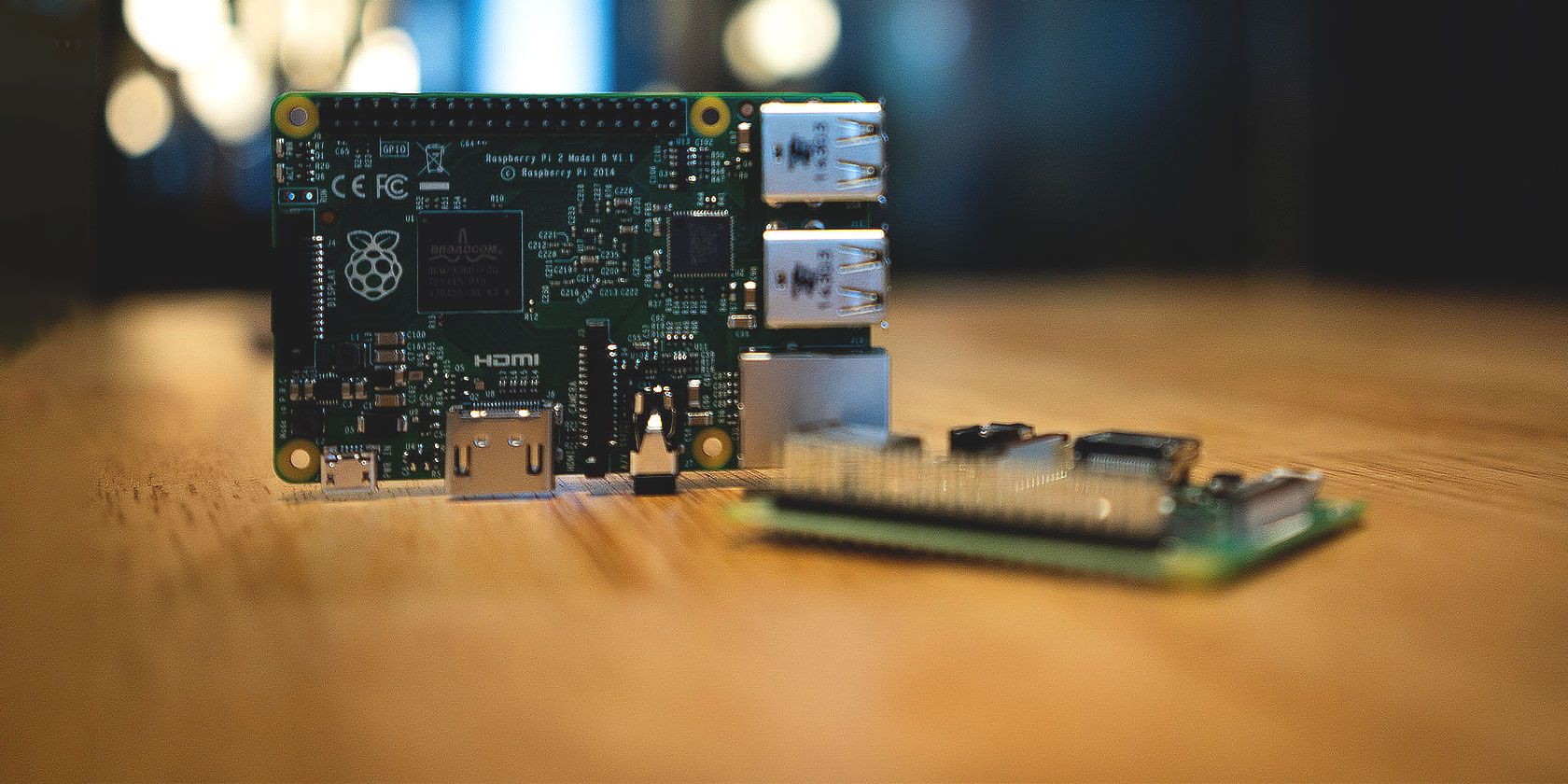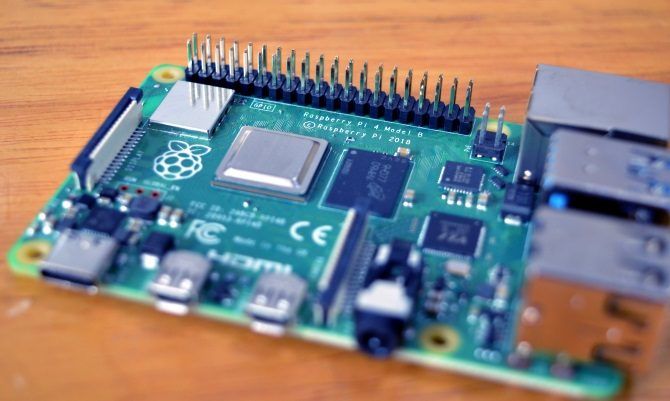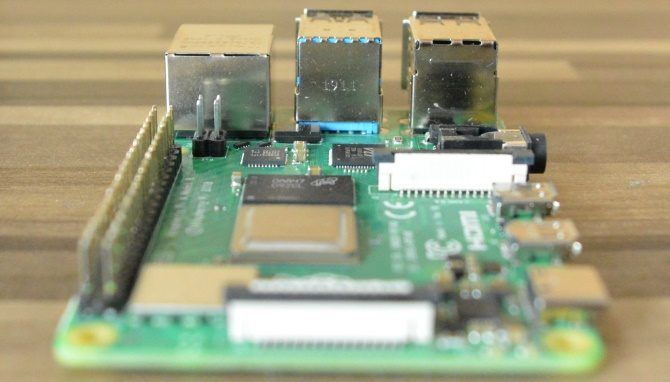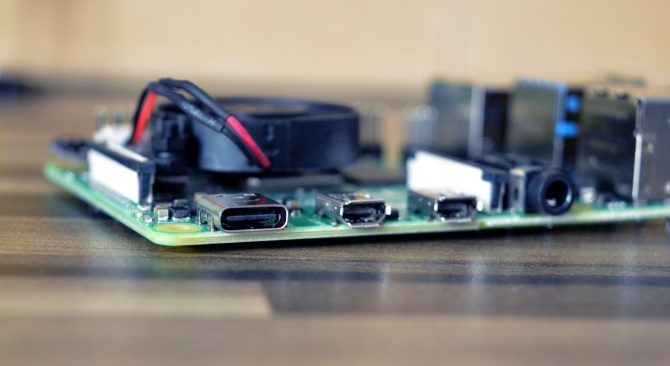You're just getting to grips with the Raspberry Pi when along comes a new model. The Raspberry Pi 4 is here, but should you buy it? What does it offer that the other boards don't?
The Raspberry Pi 4 is a game-changer. Here's what you need to know about the Pi 4 and how it compares to the earlier Raspberry Pi 3B+.
Raspberry Pi 4 vs. Earlier Models
The main difference you'll find between the Raspberry Pi 4 and its predecessors is the speed. With a faster processor, more RAM, and a Gigabit Ethernet port, each indicator of performance has been enhanced.
Some believe that the Raspberry Pi 4 is the first 64-bit version of the computer, but this isn't true. In fact, the Raspberry Pi 2 was the first to feature a 64-bit processor. However, it wasn't until 2020 that a 64-bit operating system was made available by the Raspberry Pi Foundation.
Meanwhile, the USB ports have also been upgraded. All in all, the Raspberry Pi 4 is the most powerful version of the Raspberry Pi. Better still, it retains the familiar flexibility that makes the device perfect for almost any computing project.
Choose From 3 Raspberry Pi 4 Models
The Pi 4 is the first version of Raspberry Pi to be available with multiple RAM configurations. Earlier models have been upgraded with minor revisions (such as the Pi Zero and Pi Zero W, or the Raspberry Pi 3 and 3B+). You have a choice of three versions of Raspberry Pi 4:
- Raspberry Pi 4 2GB
- Raspberry Pi 4 4GB
- Raspberry PI 4 8GB
The three versions of the board each has a different price point, commensurate with the amount of RAM.
(A Raspberry Pi 4 1GB model was originally released. However, following release of the Raspberry Pi 4 8GB, this has been withdrawn.)
Raspberry Pi 3 vs Raspberry Pi 4 Specifications
The most powerful version of the Raspberry Pi prior to the Pi 4 is the Raspberry Pi 3 B+, released in 2018. This boasts:
- Quad-core Cortex-A53 1.4GHz CPU
- Broadcom VideoCore IV @ 250MHz GPU
- 1GB
- 4 x USB 2.0 ports
- 5mm TRRS a/v port
- 2 x Micro-HDMI ports
- Gigabit Ethernet port (hardware limited to 300Mbps)
- b/g/n/ac dual band 2.4/5GHz Wi-Fi
- Bluetooth 4.2
- microUSB power connection
- Weighs 45 grams (1.6 ounces)
The three Raspberry Pi 4 boards share the following specifications:
- Quad-core Cortex-A72 1.5GHz CPU
- Broadcom VideoCore VI @ 500MHz GPU
- 2GB/4GB/8GB RAM
- 2 x USB 2.0 ports
- 2 x UBS 3.0 ports
- 5mm TRRS a/v port
- 2 x Micro-HDMI ports
- Gigabit Ethernet port
- b/g/n/ac dual band 2.4/5GHz Wi-Fi
- Bluetooth 5.0
- USB-C power connection
- Weighs 46 grams (1.6 ounces), a gram heavier than the Raspberry Pi 3 B+
Every specification here is an improvement on the Raspberry Pi 3 B+. Further, some additional enhancements have been introduced, for example additional interfaces via the GPIO and other ports.
Also, the Raspberry Pi 4 needs a dedicated USB-C power source. Repurposing an older PSU with a microUSB to USB-C adapter won't work as the Raspberry Pi 4 requires 600mA (3W) average when idling. This requirement obviously increases under heavy loads.
Is the Raspberry Pi 4 Compatible With Existing Accessories?
If you already have cases, HATs, and pHATs, you probably want to know if they're compatible with the Pi 4.
Over the years since its original release, the Raspberry Pi model B has barely changed. The board has remained at 85.60mm x 56.5mm, and the ports (Ethernet, power, TRRS) have remained in the same place.
Some revisions have occurred, however. Two additional USB ports were added to the Raspberry Pi B+ (2014) which have been retained in subsequent models. Similarly, the original Raspberry Pi A and B boards had 26 GPIO pins. Again, the Model B+ expanded this to 40 pins.
These board revisions have been retained with the Raspberry Pi 4, but there are some changes. Specifically, these include a USB-C power connector and two micro HDMI ports. As a result, while expansion boards probably work on the Pi 4, your Raspberry Pi case probably won't fit.
As this is perhaps the most important accessory for the Pi, you'll need a replacement. Check our round up of the best Raspberry Pi 4 cases for the best options.
As for HATs and pHATs, the GPIO remains unchanged. Any that you own should still fit on the Pi 4 and run as expected, although you should download updates to ensure you're running the latest software.
What Can You Do With a Raspberry Pi 4?
While the Pi 4 is designed with backward compatibility in mind, it has several advantages over earlier models. Some of these might seem obvious. You might, for example:
- Build a retro gaming machine with increased reliability
- Use it for streaming media (e.g. with Kodi or Plex)
- Manage a DIY NAS box
- Host online games
- Run a web server
- Create a compact podcast studio
- Stream PC games
It doesn't end there. The increased system spec of the Raspberry Pi 4 and its minimum 2GB of storage introduces something new. You may know that the Pi has long been able to run LibreOffice, send email, and other desktop tasks. It is only with the Pi 4 series that it feels powerful enough to manage these tasks without hanging.
This little computer is now a sub-$100 desktop replacement. Tempted? Use the 8GB model for the best Raspberry Pi experience (the 4GB version is an adequate substitute).
Which Raspberry Pi 4 Model Should You Choose?
RAM aside, there is little to choose between the various Raspberry Pi 4 boards. So how can you choose which to buy?
If you're looking for an upgrade for the Raspberry Pi 3 B+ or earlier, then the Raspberry Pi 4 2GB model is ideal. You get the latest board and a doubling of RAM all for a price in the same areas as the Pi 3 B+.
Building a NAS, server, or some other project with a requirement for more RAM than usual? Use the Raspberry Pi 4 4GB. It can also revolutionize your retro gaming system and handles media hosting and streaming better than ever.
For a Raspberry Pi experience that is as close to a desktop computer as possible, buy the 8GB board. It might be more expensive, but the Raspberry Pi 4 8GB can cope with anything the earlier models can---and more.
But what if you want a powerful Raspberry Pi but can't afford a Raspberry Pi 4? Then the Raspberry Pi 3 B+ is your best option. Struggling to afford any Raspberry Pi board? Think about buying the Raspberry Pi Zero.
Our guide to the different Raspberry Pi models will help you choose the right Pi for you.
The Raspberry Pi 4 Is Worth the Upgrade
Perhaps the great thing about the Raspberry Pi 4 is that it is a seamless upgrade. Most (if not all) existing Pi projects run on it. Meanwhile, operating system maintainers may need to make some tweaks, but otherwise they should all run on the Pi 4.
With a good choice of boards, the Raspberry Pi 4 is a platform that can handle almost anything. From robot projects to running as a reliable desktop replacement, this is a Raspberry Pi that everyone should own.
First time buying a Raspberry Pi? Check our list of the best Raspberry Pi projects to get started.




